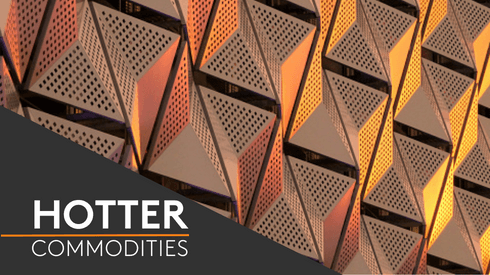Budding US recovery?
“Navigating the ups and downs of our cyclical businesses has prepared us to stay focused and ready in an economy with lots of questions marks,” said Topalian, who addressed attendees of the conference for the first time since taking the reins at Nucor in January of this year. “As you all know, the current market for steel remains challenging around the world.”
“However, in the American economy, we’re seeing some positive indicators: For one, the construction market has remained incredibly resilient. We have seen that Nucor’s backlogs and order-entry rates continue to be very encouraging for construction,” he said.
Topalian noted that the Charlotte, North Carolina-based steelmaker is seeing strength in markets tied to construction, such as HVAC and water heaters.
“Additionally, we’re also seeing strong growth in solar and renewable market segments,” he said. “Automotive has improved from its earlier lows, and while we don’t expect the market to return to pre-pandemic levels anytime soon, there’s been an increase in activity in many sectors of Nucor’s markets.”
There has been a strong and growing recovery in steel prices.
Fastmarkets’ daily steel hot-rolled coil index, fob mill US was calculated Monday at $34.10 per hundredweight ($682 per short ton), up 55.8% from a year-to-date low of $21.89 per cwt on April 30.
$4 billion in strategic investments
Nucor remains undeterred in its quest to expand its capabilities and cleave market share from integrated steelmakers.
“This year alone we have been focused on nine growth projects that represent more than $4 billion of investment to expand our reach and our capabilities,” Topalian said.
The purpose of these investments is threefold.
First, the company is expanding the range of value-added products that it can offer to the automotive end market.
“Our [electric arc furnaces] are now able to produce almost all of the automotive grades made by domestic integrated mills,” Topalian said. “We firmly believe in the next several years that our facilities will be able to produce all of the products demanded by our automotive customers.”
Second, Nucor has improved the performance of its business serving the construction markets, specifically in rebar fabrication and metal buildings.
Third, Topalian said the company expects to be able to produce 97% of plate products demanded in the US market by 2022.
“Our new plate mill in Brandenburg, Kentucky, is by far our largest investment, and the location of the mill will give us a geographic advantage in serving the Midwest,” he said.
Kentucky governor Andy Beshear announced on Friday October 23 that Nucor had broken ground on the $1.7-billion mill.
Remain vigilant on trade
With global steel overcapacity a major source of anxiety for the domestic industry, Topalian said the United States must maintain the protectionist measures it has introduced in recent years to blunt the threat posed by countries with an eye on the US market.
“I know some of you are not fans of the trade position the United States has taken more recently, but I’m hear to tell you it is necessary,” Topalian said.
After steel production in the US recovered between 2012 and 2013, Topalian said the country was inundated by imports, prompting the domestic industry to file an “extraordinary” series of trade cases between 2014 and 2017 across every major product line.
“Between these cases and [Section] 232 action, steel imports into the United States declined, and by 2019, domestic production had recovered to levels we hadn’t seen since the period from 2012 to 2014,” he said. “While measures like these are helping the American steel industry and our domestic economy, we believe we must remain vigilant.”
“Critically, we discovered our so-called allies were not actually allies at all when it came to trade,” he said. “They were among the most aggressive exporters during this period, seeking to shore up their own economies. Those nations continue to build and maintain excess capacity that will target the US steel industry again if given the chance.”
Topalian said overcapacity extends beyond China. He noted that leaders of free-market economies have ceded long-term economic competitiveness in pursuit of short-term foreign policy objectives over the past 75 years.
“Those long-term concessions have come to be viewed as entitlements by our trading partners,” he said. “This must change. One thing that Covid has taught us all is that having core manufacturing capability in our domestic markets is at least as important as our foreign policy considerations, and core capabilities start with the very foundation of manufacturing steel, semiconductors, [personal protective equipment], chemicals, advanced cellular communications and pharmaceuticals.”
“Self-sufficiency in these core capabilities must be maintained or on-shored,” he added. “This can only happen by encouraging domestic manufacturing and addressing reliable trade enforcement over the long term.”




